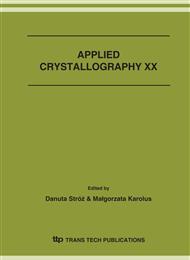p.175
p.181
p.185
p.189
p.193
p.199
p.203
p.207
p.213
The Influence of Aluminium Addition on the Microstructure of Zinc Pack Coatings
Abstract:
This work aims to investigate the feasibility of Zn-Al deposition on low alloy steels at temperatures from 400 up to 440oC by pack cementation process aiming to increase their corrosion resistance. A series of experiments were undertaken to investigate the effects of pack powder composition and the deposition temperature of the process. It was observed that the parameters of zinc content and temperature affect only the coating deposition speed, but not the phase composition of the as produced coating. Al forms an overlying layer that seals the zinc coating. In any case, the deposition of successive layers of Zn and Al is feasible with pack cementation. The corrosion performance of Zn-Al coatings formed with alternative methods is already studied and proved to be resistant in harsh environments. So the herein studied coatings are expected to be corrosion resistant. Furthermore as Al is much more resistive than Zn, these coatings are more effective than pure Zn ones.
Info:
Periodical:
Pages:
193-198
Citation:
Online since:
December 2007
Authors:
Price:
Сopyright:
© 2007 Trans Tech Publications Ltd. All Rights Reserved
Share:
Citation:


